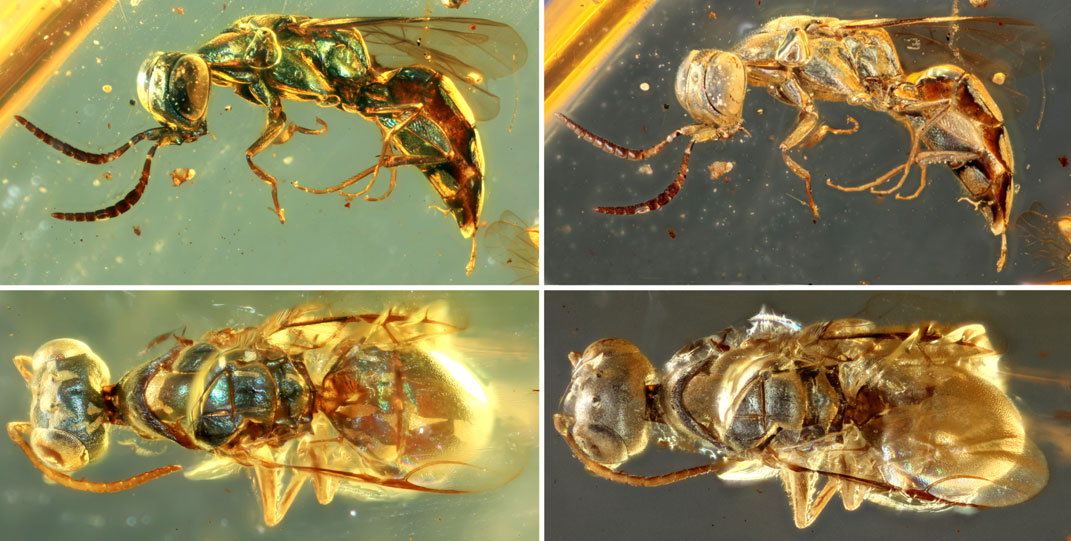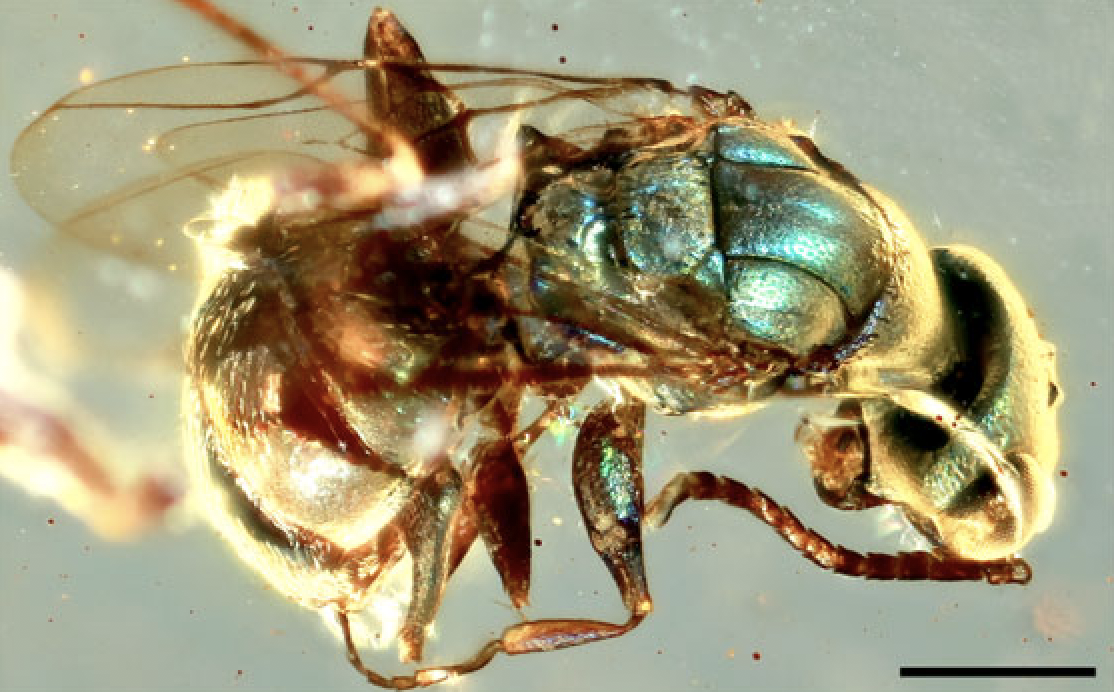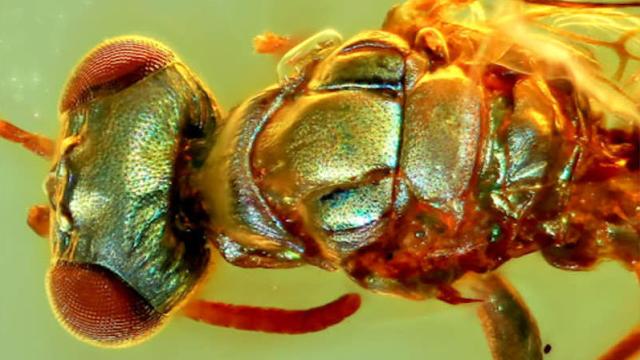Fossils rarely retain evidence of an organism’s original colour, but these 99-million-year-old amber fossils found in Myanmar are revealing the vibrant hues of another world.
New research published today in Proceedings of the Royal Society B highlights dozens of amber fossils from the Cretaceous period that still contain evidence of their occupant’s original colours. Bursting in metallic blues, purples, and greens, these ancient insects are both alien and oddly familiar.
Nature, it goes without saying, is very colourful. Sadly, however, fossils usually provide a dull, monochrome view of the past. That said, paleontologists are finding ways of teasing out colours from well-preserved fossils, whether they be dinosaurs and flying reptiles or ancient snakes and mammals.

Determining the colour of extinct species is important because it can tell paleontologists a thing or two about the animal’s behaviour, such as whether it used extravagant colours to attract mates or warn off potential predators, camouflage for hiding or stealth, or colours that helped with temperature regulation. Colour can also shed light on ancient environments and ecosystems, particularly when it comes to camouflage.
For the new study, a research team from the Nanjing Institute of Geology and Palaeontology of the Chinese Academy of Sciences (NIGPAS) studied 35 individual amber samples with fantastically preserved insects trapped inside. The fossils were found in an amber mine in northern Myanmar.

“The amber is mid-Cretaceous, approximately 99 million years old, dating back to the golden age of dinosaurs,” explained Cai Chenyan, an associate professor at NIGPAS and the lead author of the new study, in a press release. “It is essentially resin produced by ancient coniferous trees that grew in a tropical rainforest environment. Animals and plants trapped in the thick resin got preserved, some with life-like fidelity.”
Colours in nature tend to fall under three main categories: bioluminescence, pigments, and structural colours. These amber fossils retain structural colours, which tend to be intense and rather eye-grabbing (including metallic colours) and are produced by microscopic light-scattering structures located on the heads, bodies, and limbs of animals.

“The type of colour preserved in the amber fossils is called structural colour,” explained Pan Yanhong, a co-author of the study and a professor at NIGPAS. “The surface nanostructure scatters light of specific wavelengths” which “produces very intense colours,” said Pan, adding that this “mechanism is responsible for many of the colours we know from our everyday lives.”
These amber fossils retained evidence of their structural colours, but not before careful preparation, as the authors explain in their paper:
For standard observation, fossils were polished using different grades of sandpaper and diatomite powder, to get as close to the [fossils] as possible without damaging them. Where it aided observation, some pieces were polished into very thin slices, making the insect [fossils] clearly observable and the surrounding amber matrix almost transparent in bright light.
For you photographers out there:
Photographs against various backgrounds were taken using a Canon EOS 5D Mark III digital camera, equipped with a Canon MP-E 65 mm macro lens (F2.8, 1–5X), and with an attached Canon MT-24EX twin flash. Focus stacking software (Zerene Stacker, v. 1.04) was used to increase the depth of field.
The images were edited in Photoshop, but only to adjust brightness and contrast.
Cuckoo wasps were particularly stunning, with their heads, thorax, abdomen, and legs featuring hues of metallic blue-green, yellow-red, violet, and green. Fascinatingly, these colour patterns were a close match to cuckoo wasps alive today, according to the research. Other standouts included blue and purple beetles, and metallic dark-green soldier flies. The greenish-blue colourings were attributed to camouflage, but other functions, like thermoregulation, could not be ruled out.

To test whether the observed colours were caused by the nanostructures, the scientists did some theoretical modelling. They studied a selected wasp specimen using an electron microscope, which enabled them to match patterns with specific colours. Specifically, reflectance wavelengths at 514 nanometres corresponded to bluish-green colour as seen under white light, which nicely matched what they saw with their own eyes.

The colours seen in these amber samples, therefore, are indicative of how these insects actually appeared during the Cretaceous, according to the research.
“[Our] observations strongly suggest that the colour preserved in some amber [fossils] may be the same as displayed by the insects when alive, some 99 million years ago,” wrote the authors in the study. “This is moreover corroborated by the fact that metallic blue–green coloration is frequently found in extant [living] cuckoo wasps.”
The authors also analysed amber fossils in which colour wasn’t preserved. In these cases, the nanostructures were badly damaged, resulting in brownish and blackish coloration.
This is an exciting result, because it means other amber fossils might also yield structural colours. Time for scientists to revisit some old specimens.
